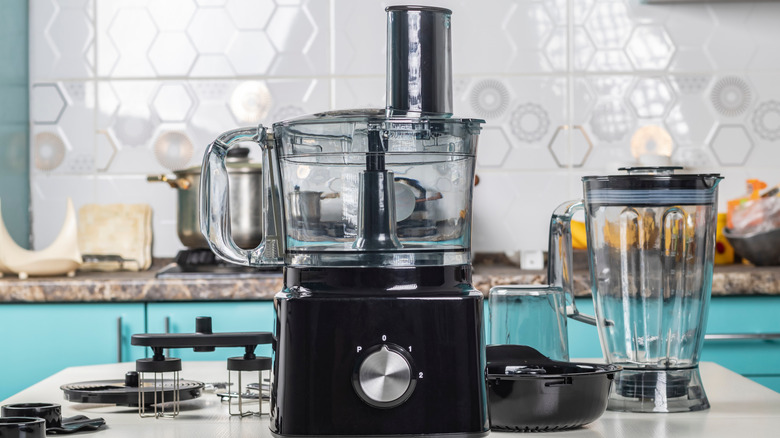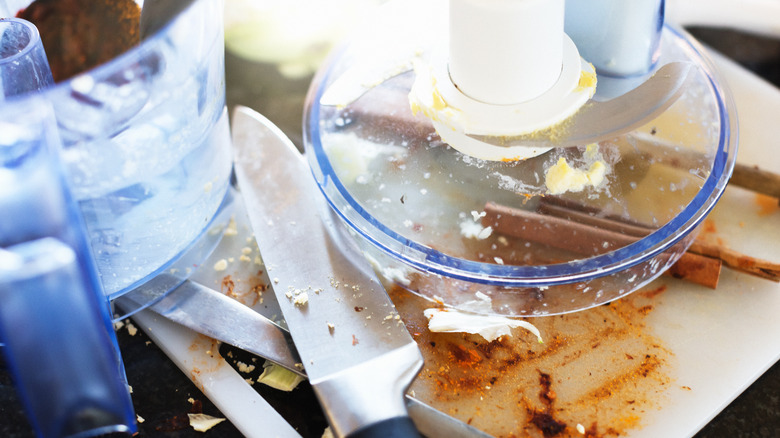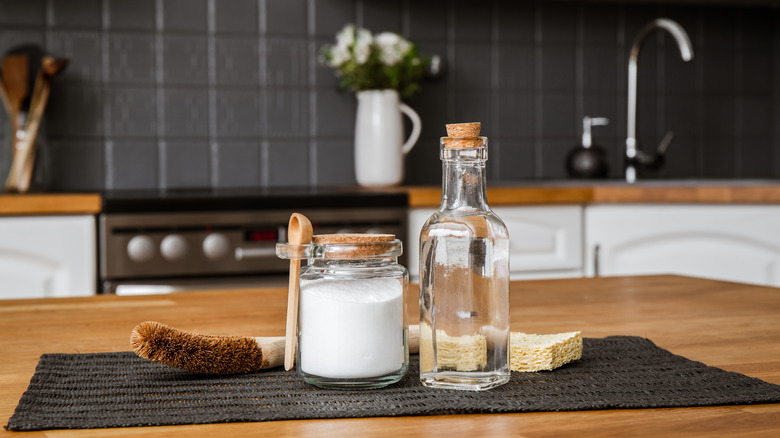The Fast And Simple Way To Clean A Food Processor
A food processor can make meal prep easier, but it's not something you can set and forget. If you don't clean it regularly, it can become a breeding ground for bacteria and stop functioning as it should. The blades will get dull, the bowl will start smelling bad, and the metal parts might rust over time. In the worst-case scenario, your food processor may stop working altogether. Luckily, there's a simple way to clean it. To keep it simple, fill the food processor's bowl with a cup of warm water and then add a few drops of dish soap. Secure the lead, turn on the food processor, and let it run for three minutes or so. Next, remove the plastic container and rinse it with warm water. Pat it dry before storing it away.
This kitchen appliance can harbor dangerous bacteria, leading to foodborne illnesses. Most germs aren't visible to the naked eye, but that doesn't make them less harmful.
Let's say you use your food processor to mince raw chicken or beef. Any bacteria found on the meat can contaminate the bowl and blades, and a quick rinse may not be enough to kill those germs. For this reason, it's crucial to clean your kitchen appliances after each use and disinfect them every few weeks.
How to clean a food processor in half the time
Ice cream, protein bars, and pizza dough are just a few of the things you could make in a food processor, even when you're short on time. The challenge lies in cleaning your appliance once you're done with it. If your food processor still isn't clean after running the machine with dish soap, unplug and disassemble the appliance, and then wash the blades with dish soap. Scrub them with a soft sponge if necessary.
Fill the sink with warm water, add dish soap, and then submerge the lid and other components, except for the motor base. Use a toothbrush or dish sponge to gently scrub them. For stubborn residue, sprinkle baking soda on the sponge to remove the gunk. Meanwhile, wipe the motor unit with a damp microfiber cloth.
Last, rinse the blades under warm running water and pat them dry to prevent mold growth. Again, there's no need to repeat these steps every time you use the food processor unless you're dealing with stubborn stains. But, at the very least, you should clean the jug and blades with soapy water and wipe down the base after each use.
Deep-clean your food processor every few weeks
Most blenders and food processors develop foul odors sooner or later. These appliances have lots of nooks and crannies where food particles can get trapped, leading to bacteria and mold growth. Additionally, some products are made of low-quality plastic that may absorb food odors. Given these aspects, it's essential to deep-clean and sanitize your food processor every few weeks.
First, disassemble the appliance and place all of the components, except for the base and blades, in a sink filled with warm water. Mix one part baking soda with two parts vinegar in a small bowl, spread the paste on a dish sponge, and then scrub the removable components. Clean the blades separately to avoid damaging the other accessories. Vinegar is a natural disinfectant and can kill some foodborne bacteria, while baking soda acts as a degreaser and deodorizer. When combined, these ingredients can remove stubborn stains, debris, grime, and foul odors.
As a final word, it's never a good idea to put blender attachments in the dishwasher — and the same goes for your food processor. These gadgets have sharp blades, graters, and other components that can get damaged when washed at high temperatures. Some accessories, such as the blending container, gasket, and lid, might be dishwasher-safe, but you should still check the manufacturer's instructions.


